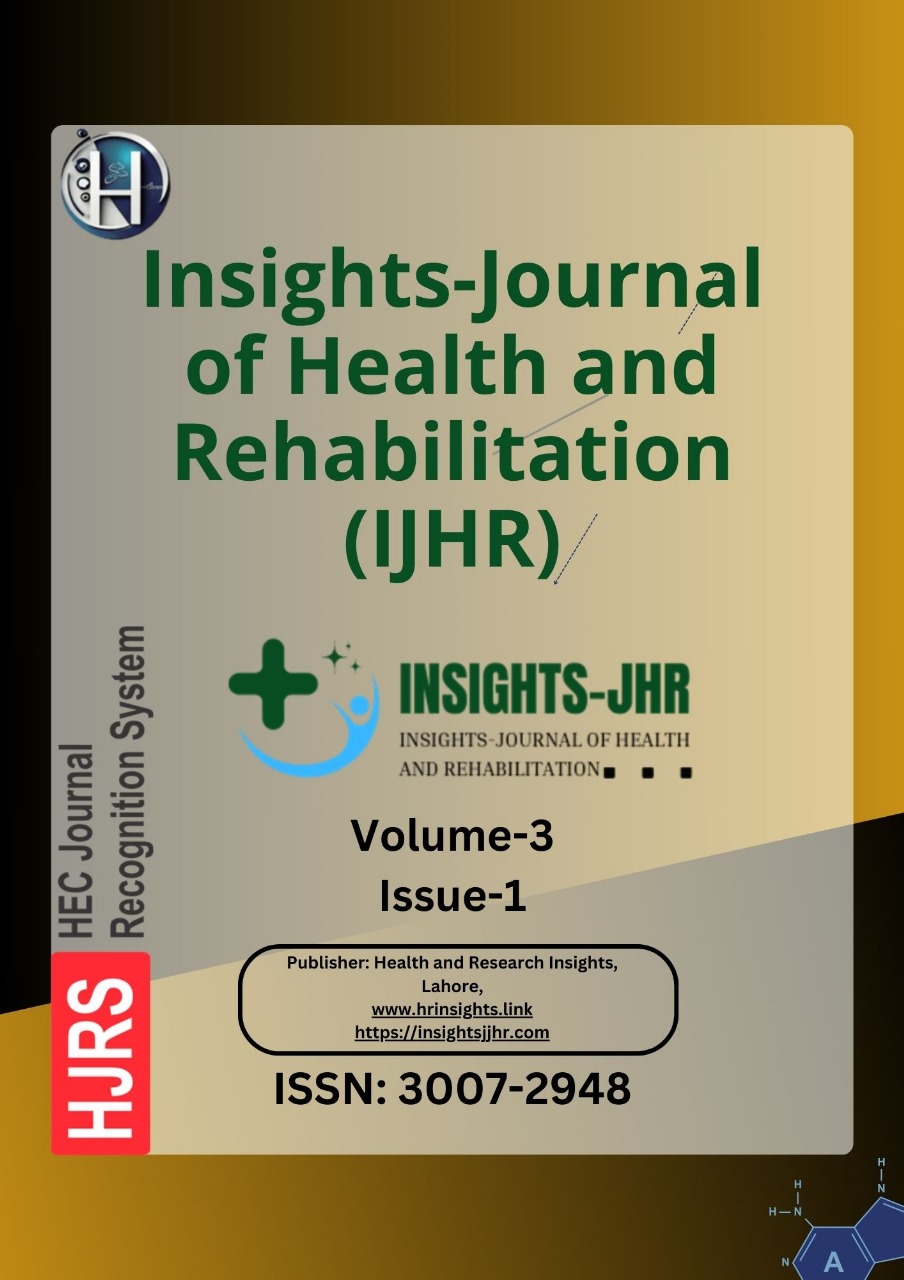RELIABILITY OF HEEL RISE TEST IN HEALTHY YOUNG FEMALE POPULATION TO ASSESS THE STRENGTH OF PLANTAR FLEXORS, LAHORE
DOI:
https://doi.org/10.71000/99gcc668Keywords:
Balance, cross-sectional study, heel rise test, plantar flexors, reliability, single-leg heel rise, strengthAbstract
Background: The heel rise test is a widely used functional assessment tool in clinical practice to evaluate plantar flexor strength, endurance, and fatigue. It involves both concentric and eccentric contractions, providing insight into muscle performance and the functional integrity of the lower limb. Due to its diagnostic and rehabilitative significance, it is frequently utilized in musculoskeletal assessments. However, its reliability, particularly in young female populations, requires further validation.
Objective: To determine the reliability of the heel rise test in assessing plantar flexor strength in healthy young females.
Methods: A cross-sectional study was conducted on 47 healthy female participants aged 18 to 25 years. Participants were selected through convenience sampling and underwent a standardized heel rise test. They were instructed to perform maximum heel raises until fatigue while maintaining balance using fingertip support against a wall. The number of completed heel raises was recorded for both feet. To assess test-retest reliability, the procedure was repeated after a 15-minute interval, and the results were compared. Pearson’s Correlation Coefficient was used for statistical analysis, with a significance level set at p ≤ 0.05.
Results: A strong correlation was observed between the two test trials. For the right foot, the mean number of heel raises was 18.23 ± 6.13 in the first reading and 19.34 ± 6.69 in the second, with a correlation coefficient of r = 0.919, p = 0.001. For the left foot, the mean values were 17.94 ± 6.51 and 19.04 ± 6.98, respectively, with a correlation coefficient of r = 0.896, p = 0.001.
Conclusion: The heel rise test demonstrated high reliability in assessing plantar flexor strength in healthy young females. Its strong test-retest consistency supports its use as a dependable clinical tool for evaluating lower limb function.
Downloads
Published
Issue
Section
License
Copyright (c) 2025 Rabia Masood (Author)

This work is licensed under a Creative Commons Attribution-NonCommercial-NoDerivatives 4.0 International License.







